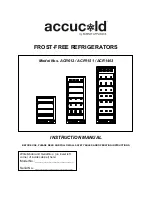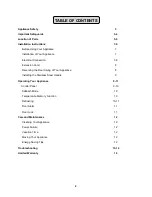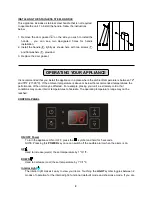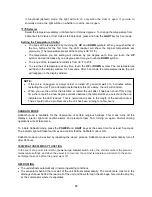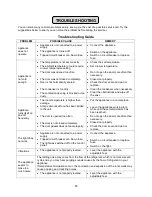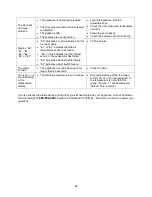
13
TROUBLESHOOTING
You can solve many common problems easily, saving you the cost of a possible service call. Try the
suggestions below to see if you can solve the problem before calling the servicer.
Troubleshooting Guide
PROBLEM
POSSIBLE CAUSE
REMEDY
Appliance
does not
operate.
Appliance is not connected to a power
supply.
The appliance is turned off.
Tripped circuit breaker or a blown fuse.
Connect the appliance.
Switch on the appliance.
Switch on circuit breaker or replace
fuse.
Appliance is
not cold
enough.
The temperature is not set correctly.
The ambient temperature could require
a lower temperature setting.
The door was opened too often.
The door was not closed completely.
Door is not hermetically sealed.
The condenser is too dirty.
The ventilation opening is blocked or too
dusty.
Check the set temperature.
Set a lower temperature.
Do not open the door more often than
necessary.
Close door properly.
Check the door seal and clean or
replace.
Clean the condenser when necessary.
Clear the obstructions and wipe off
the dust.
Appliance
turns itself on
and off
frequently.
The room temperature is higher than
average.
A large amount of food has been added
to the unit.
The door is opened too often.
The door is not closed completely.
The door gasket does not seal properly.
Put the appliance in a cooler place.
Leave the appliance working for a
while until the set temperature has
been reached.
Do not open the door more often than
necessary.
Close door properly.
Check the door seal and clean or
replace.
The light does
not work.
Appliance is not connected to a power
supply.
Tripped circuit breaker or a blown fuse.
The light was switched off on the control
panel.
Connect the appliance.
Switch on circuit breaker or replace
fuse.
Switch on the light.
Vibrations
The appliance is not properly leveled.
Level the appliance with the
adjustable feet.
The appliance
seems to
make too
much noise.
The rattling noise may come from the flow of the refrigerant, which is normal. As each
cycle ends, you may hear gurgling sounds caused by the flow of refrigerant in your
appliance.
If temperature fluctuations occur, the contraction and expansion of the inner walls may
cause popping and crackling noises.
The appliance is not properly leveled.
Level the appliance with the
adjustable feet.
Summary of Contents for Accucold ACR1151
Page 15: ...15 NOTES...

